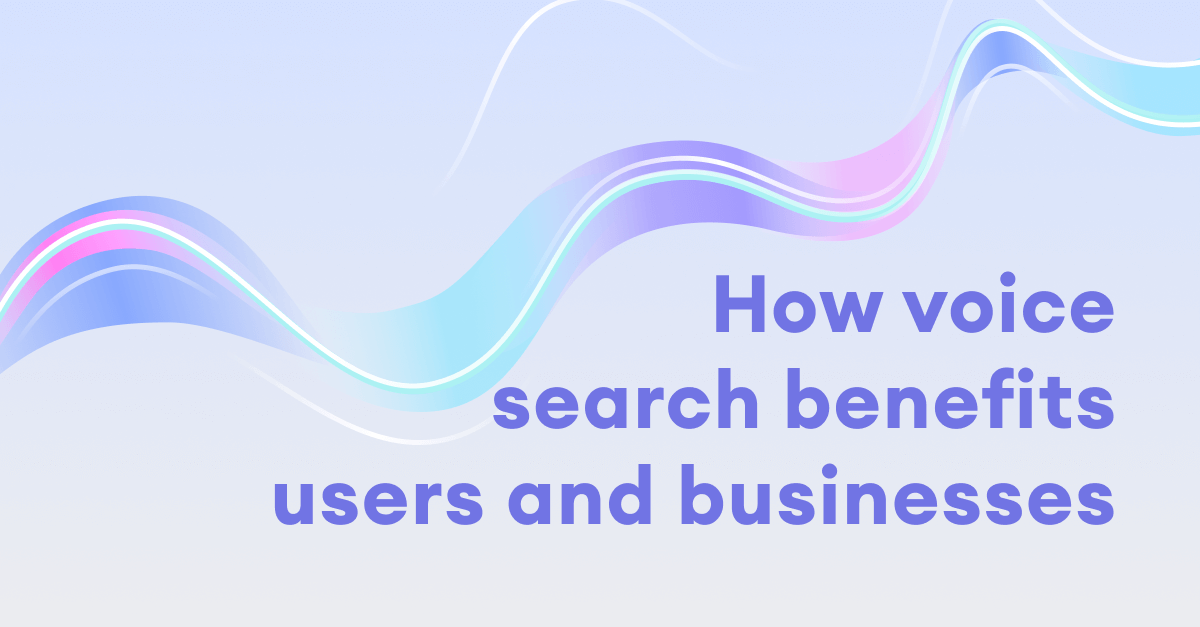
No matter how advanced computers become, our voice will always be the best tool for communication. So, it is not surprising that in the last decade the focus of major technology companies has been on the race to develop artificial intelligence systems capable of interpreting our voices. Voice assistants, onsite voice search, and speech services are already a big part of most people’s daily routines.
In this article we will delve into the relatively new segment of voice search, “onsite voice search”, and learn why businesses should make it a priority in their mobile apps and websites.
As with many other segments of the voice technology market, there are several layers of onion when using the generic term “voice search.” Given the rise of voice assistant platforms like Amazon Alexa or Google Assistant, many companies will think of these platforms when it comes to voice search.
The main goal for companies in this context is to become the most relevant product or service when the end-user browses with a voice assistant. Attend a conference or meeting on voice technology, and you’ll quickly realise that finding products and services through these platforms today is a challenge.

Most voice search tips on voice assistants rely on search engine optimisation (SEO) principles for mobile and web applications. Businesses should always be on the lookout for new ways to engage with end consumers. However, the conversation around voice search on emerging voice assistant platforms has caused the industry to overlook existing digital domains that provide an optimal scenario for voice technology to flourish.
Onsite voice search is exactly what the name implies. It takes advantage of similar technology that you use when engaging with a voice assistant on a smart speaker but can be implemented alongside existing digital domains that a business already operates, such as a mobile app or website.
Voice search can be used to efficiently search for products, content, or other information using natural language alongside a familiar graphical user interface (GUI). This combination allows voice search to become not only a way to enter information, but also to complement the overall experience by giving the user the ability to interact with your company on their own terms.
The development of speech recognition technology began as early as the 1950s. Early systems, such as the “Audrey” system created by Bell Laboratories in 1952, could only recognise numbers from a single speaker. Fast-forward to today, and you’ll see speech recognition technology built into virtually every digital keyboard.
This begs the question: why do we need voice search on a website when we already have reliable speech recognition technology capable of understanding us with the same accuracy as a human?
Speech recognition is only one piece of the puzzle for creating a robust onsite voice search experience. Modern speech recognition systems can understand the actual words we are saying with the same accuracy as humans. However, the technology is not designed to understand the end goal or intent of the user’s words.

To create a robust experience for the end-user, product teams need access to Real-Time Automatic Speech Recognition (ASR) + Natural Language Understanding (NLU) simultaneously. This allows product teams to build a system that truly understands what the user wants and can deliver on those demands.
Main Benefits of Voice Search
Three main benefits to focus on when using Voice Search:
- Efficiency
- Conversion
- User behaviour control
The most obvious benefit of onsite voice search is efficiency for the end-user. Whether it is searching for a pair of shoes or trying to find an instructional video, there is no mode of input that is quicker than using your voice.
Efficiency can be valuable for the end user, but helping your customer buy a pair of shoes three times faster using voice might be a hard sell to management as a new product feature. However, when you look at the conversion rates for users who take advantage of regular onsite search features, taking advantage of voice search might have more value than is seen on the surface.
Customers who use onsite search are 216% more likely to convert into paying customers than regular visitors – Hubspot
The final benefit of onsite voice search revolves around the new user behaviours that are being created with voice technology. Thanks to devices like smart speakers and Air Pods, more and more people are becoming comfortable with controlling their devices using their voice.
The value of building voice technology in your own digital domain is that product teams get full control over the evolution of the end-user voice experience and the data that comes with it. This allows product teams to iterate and create a voice experience specifically tailored to the end user.